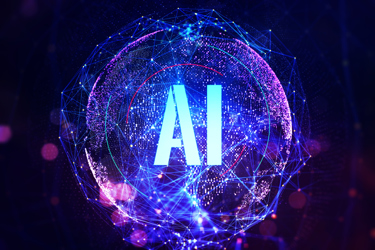Using AI To Combat Supply Chain Issues
By Devin Partida, ReHack.com

It's difficult to know how many decisions artificial intelligence (AI) makes on humanity's behalf each day, but the number is probably staggering. Business leaders are excited by the prospect of AI growing the global gross domestic product (GDP) by $15.7 trillion by 2030.
Other accounts say AI spending among retailers alone could reach nearly $20 billion by 2027. Here’s why that's the case.
Quantifying The Advantage Of AI In The Retail Supply Chain
The market for machine learning (ML) and AI products is so saturated that decision makers must be wary of exaggerations and empty promises. Providers should be able to communicate exactly how their products add value. However, AI and ML investments do yield quantifiable returns.
Recent surveys of industry decision makers showed that supply chains with AI investments were rated 65% more effective, cheaper to operate, and less exposed to risk. The survey was not AI-specific, yet it revealed these top areas of operational technology (OT) spending:
- Advanced analytics
- AI and ML
- Supplier portals
- Replenishment
- Transportation management and logistics
- Sourcing
AI and ML are explicitly named in one of these and are instrumental in realizing the others. Here’s how AI is helping retailers and supply chains combat existing issues and prepare for future ones.
1. Addressing Driver Shortages
Is it a worker shortage or a wage shortage? As the debate continues, AI is helping close the ongoing skills gap as it applies to transportation in the retail supply chain.
Automating elements of the trucking process is expected to help the United States address the nearly 160,000 shortfall of skilled drivers it's expecting by 2028. AI saves labor hours and time in transportation through other means, including:
- Combining loads and routes to use fewer trucks and drivers
- Finding the most efficient routes to save fuel and time spent on the road
- Automating maintenance tickets through predictive IoT tools
- The Internet of Things (IoT) has many other applications in the retail supply chain besides transportation.
2. Achieving Greater Inventory Visibility
Managing inventory in retail spaces, warehouses, and distribution centers is a constant job best left for AI.
Retailers in the grocery sector are especially motivated to apply technology to inventory visibility — and so is any other company staking its claim on delivering perishable goods to customers' homes. This supply chain is growing faster than most other industries and wouldn't be possible without AI.
Some 35% of surveyed grocers have purchased AI products to achieve real-time inventory reporting, and 30% are using computer vision or machine learning. Retailers might combine AI with IoT tags and sensors to allow constant tallying, tracking, or data-gathering. Imagine enterprise-planning software that:
- Knows when freight enters a warehouse, retail store, or specific geo-tagged area
- Alerts staff when inventory leaves designated areas unexpectedly
- Receives data from sensors in retail or shipping cartons informing decision makers about perishable goods
With AI, retailers can know where every piece of inventory is, where it's going and what condition it's in. This makes for more proactive decision making where restocking is concerned and sometimes automates this process entirely.
3. Predicting Supply, Demand, And Disruptions
Companies that outperformed the others during COVID-19 are continuing to widen their lead. They're largely doing this through technology.
Retail soared by 35% from February 2020 to April 2021. This means enormous opportunities for companies that can capitalize on it. Consumers have been throwing themselves into new hobbies, spending patterns, home decorating and improvement projects, and more. AI offers tools designed to wring actionable predictions out of this apparent chaos.
Digital twins use AI, company databases, and real-time data to model current and future retail events, networks, or facilities. Unilever uses them to create real-time models of many of its factories, which span 190 countries and over 400 distinct retail brands.
Digital twins are a futuristic way to solve this problem. One algorithm or model isn't enough at a time when companies operate manufacturing, distribution, and retail facilities in many territories. Digital twins help all associated parties model their operations while considering unique geographical, political, and demographic characteristics. They help decision makers assemble plans before disruptions occur.
AI Is An Ally In Retail
Artificial intelligence is just getting started with retail if these statistics are anything to go by. Opportunities abound for retailers and their supply chain partners to:
- Optimize simulations using AI
- Use more advanced AI-powered cybersecurity tools
- Reduce customer returns using machine vision AI tools for product inspections
AI can be a useful substitute for tasks where human consistency or intuition falls short. The result is savings across time, labor, materials, and waste.
About The Author
Devin Partida is a writer and blogger interested in retail technologies and business solutions. To read more from Devin, visit ReHack.com, where she is the Editor-in-Chief.
